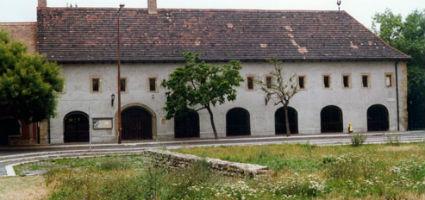2024. April 30. Tuesday
Budapest Gallery Exhibition Hall - Budapest
 |
Address: 1036, Budapest Lajos u. 158.
Phone number: (1) 388-6784
E-mail: info@budapestgaleria.hu
Opening hours: Tue-Sun 10-18
|
The exhibition has closed for visitors.
2014.09.05. - 2014.10.05.
The exhibition of works by Dia Bögi and Tamás G. Juhász at the Budapest Gallery focuses on opposites and the tensions and interplay that emerge between them: the opposites – material-immaterial, two dimensional – three dimensional, classical art – modern art – meet at the intersection of the dialectics of white and black.
The points of departure for the two artists are different: Bögi completed her studies at the Painting Department of the University of Fine Arts. She examines the possibilities inherent in various materials (embroidery, wool thread, plaster, sand, enamel, foil, gypsum). Her works come to life through the interplay of the various materials and artistic invention. Tamás G. Juhász studied at the Department of Photography of the Moholy-Nagy University of Art and Design. In his unique visual world, his photographs, and his video installations subjective documentarism mingles with conceptual art.
Bögi’s monochromes, which are embroidered, perforated and cast in plaster, are presented as if “hovering” in the gallery space. In the lyrical consonance of the material and the form, sensual shapes and shadows organically emerge from the play of light and the materials. Juhász’s video installations are based on the interplay of white and black, material and immaterial, actual images and imagination.
As in their independent works, the oppositions inherent in their two joint video works are multi-layered. The intermedial dialogue between material and immaterial, tradition and modernity, fine arts, photography and video sometimes manifests itself in harmony, others times in tension.
The points of departure for the two artists are different: Bögi completed her studies at the Painting Department of the University of Fine Arts. She examines the possibilities inherent in various materials (embroidery, wool thread, plaster, sand, enamel, foil, gypsum). Her works come to life through the interplay of the various materials and artistic invention. Tamás G. Juhász studied at the Department of Photography of the Moholy-Nagy University of Art and Design. In his unique visual world, his photographs, and his video installations subjective documentarism mingles with conceptual art.
Bögi’s monochromes, which are embroidered, perforated and cast in plaster, are presented as if “hovering” in the gallery space. In the lyrical consonance of the material and the form, sensual shapes and shadows organically emerge from the play of light and the materials. Juhász’s video installations are based on the interplay of white and black, material and immaterial, actual images and imagination.
As in their independent works, the oppositions inherent in their two joint video works are multi-layered. The intermedial dialogue between material and immaterial, tradition and modernity, fine arts, photography and video sometimes manifests itself in harmony, others times in tension.